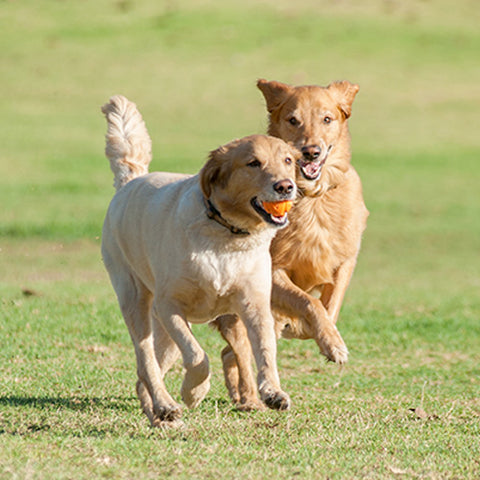Why Raw?
Truly raw frozen pet food is different than freeze-dried or dehydrated food because it is minimally processed, retains its high moisture content, and does not require any application of heat that can put vital nutrients and enzymes at risk. The high heat processing used for dry kibble and canned foods depletes the nutritional value of your pet’s food. Many of these products also contain starches, grains, flavor enhancers, preservatives, and other unhealthy ingredients to prolong shelf life and to mimic nature’s own vitamins and minerals. In fact, the relatively low temperature of 105 degrees Fahrenheit can destroy the enzymes in food that are an important part of digestion, and normal cooking temperatures can reduce nutrients down as much as 25-50%, depending upon which nutrient you are focusing on.
”What is the primary motive of kibble manufacturers? Is it profit or nutritional value? … The inferior quality and poor utilization of ingredients is masked by the addition of heat, flavor enhancers, and harmful fat sprays. The kibble manufacturers are aware of the potential dangers and potential harm to our dogs but it all boils down to producing an inexpensive product that can sustain and maintain the life of our dogs…for the kibble manufacturers it all boils down to profit with a capital P!”
Is Raw Safe?
Cats and dogs are natural carnivores. They have long, sharp teeth designed for meat eating, and their digestive tract is much shorter and secretes enzymes that enable them to safely consume raw meat. Their stomach acids are so much stronger than ours that they tend to kill off almost all pathogenic bacteria anyway. Raw food is high in protein and the natural nutrients that your pet needs.
Transitioning to Raw
Dogs and cats love transitioning to Longevity Raw Pet Food thanks to its great taste and high nutrient density. Regardless, transitioning should be done gradually to give your pet adequate time to adjust. Start your pet’s Longevity transition by replacing a percentage of your pet’s current food with raw, feeding the raw food first and then following it with the remaining quantity of your pet’s current food at least 15-20 minutes later. Over a 10-day period in dogs (20 to 30 days in cats), gradually increase the amount of raw food being fed as indicated below. Longevity recommends:

During the transition to Longevity, you may notice changes in your pet’s stool. They may experience some diarrhea or (rarely) vomiting, due to a detoxification effect, especially if they have been eating processed dry or canned food for some time. Dry skin, runny eyes, and increased shedding may also be present during this time and are normal reactions as your pet’s health improves and toxins are removed from the body. Be sure to provide plenty of fresh water during the transition to a healthier future!
Tips for successful transitioning:
- Go slowly and be patient as your pet transitions over. Younger pets or those on a healthy diet will transition more easily than older pets who may need a longer, more gradual schedule.
- Use one flavor to start to reduce digestive issues. Once your pet is accustomed to Dr. B’s Raw, you may introduce our other flavors for variety of flavor and nutrients.
- Limit treats during the transition period to encourage high nutrient feeding.
- Offer clean (preferably filtered) water throughout the process.
- If you have a picky eater, you may try fasting your dog the night before the transition begins or adding some of your pet’s favorite flavors to encourage feeding.
Questions? Email us at drbslongevityoffice@gmail.com so that we can help!
Feeding Guide
Your Dog
Raw food is nutrient dense. A general rule is that your dog will consume about 3% of his/her body weight each day or approximately 1 patty per 10 lbs of weight daily, although feeding will vary with age and activity level. For puppies, feed up to twice the adult maintenance amount. For pregnant and nursing females, feed up to three times the adult maintenance amount. Visit our Feeding Calculator below for more detailed feeding guidelines.



